Cranks are one of the most important parts of your bike, allowing you to convert the power produced by your legs into rotational motion that drives the bicycle forward.
Cranks come in a range of lengths, like handlebars and saddles, so knowing what crank length is right for you can be a bit of a minefield.
Given that cranks are levers, and we know that longer levers amplify the effect of a given input force, it’s tempting to conclude that longer cranks might increase your power output, but is that really the case?
Or could using cranks that are too long actually make it harder to pedal because your joints are forced through a greater range of motion?
Is there an optimum crank length for every cyclist?
To solve these and other crank length questions we spoke to Phil Burt, a leading physiotherapist and bike fitter, and Shimano, the world’s largest manufacturer of bicycle components.
Why are standard cranks the length they are?
The three most common crank lengths for bicycles are 170mm, 172.5mm and 175mm. What size your bike has will likely depend on what size the frame is. Small bikes tend to come with 170mm cranks, medium with 172.5mm and large with 175mm.
Shimano and other major component manufacturers, such as SRAM and Campagnolo, do offer cranks as short as 165mm at most groupset levels, and up to 180mm in some cases. Additionally, specialist manufacturers like Rotor make cranks as short as 150mm.
Extra small frames (typically those with a top tube of 50cm or shorter) are increasingly coming fitted with 165mm cranks, but it’s rare to see 167.5mm cranks, or anything longer than 175mm, specced as stock on frames of any size.
However, given people can vary in height and leg length quite significantly, why is the typical variation in cranks across the size range for most bicycles limited to just 5 to 10mm and at those precise lengths? Is there actually any evidence that suggests this is the optimum range or is it just tradition?
When we put this question to Shimano, it told us: “170-175mm cranks provide an optimal balance between rotational inertia [the torque required to turn the crank], rotational speed [i.e. cadence – shorter cranks have to be spun faster to achieve the same power output and vice versa], frame design [longer cranks require a higher bottom bracket to achieve the same pedalling clearance] and biometric issues [longer cranks place greater demands on joints and muscles as the turning circle is larger]”.
Basically, Shimano thinks 170 to 175mm is the Goldilocks zone of crank length for most people and most bikes.

How to measure crank length?
Crank length is measured from the centre of the bottom bracket axle to the centre of the pedal axle.
If you’re not sure what length the cranks on your bike are, the quickest way of finding out is typically to just look at the backside of your cranks, just below the pedal axle. The length of the crank is usually engraved or printed there.
In the event that your cranks don’t have this, you’ll simply need to pull out a tape measure.
Is there an optimum crank length?
Maybe, but probably not.
One notable study, by J C Martin and W W Spirduso, suggests the optimum crank length for maximal cycling power production (sprinting) is “20 per cent of leg length or 41 per cent of tibia length”.
Having tested crank lengths of 120mm, 145mm, 170mm, 195mm and 220m, it also noted the highest sprint power numbers recorded in the study were with 145mm cranks, and that “power produced with the 145- and 170-mm cranks was significantly (P < 0.05) greater than that produced with the 120- and 220-mm cranks.”

Measuring leg or tibia length can be tricky for amateurs, and what if your precise optimum crank length isn’t available to purchase? Good luck trying to get hold of 145mm cranks.
On top of that, maximal cycling power production isn’t the main concern for every cyclist. Other considerations such as bike fit and cycling discipline can also influence choice.
Shimano believes “there is no right or wrong and no holy grail in the discussion about crank lengths. The choice for the specific length changes by application, riding discipline and the physiological background and attributes of the athlete.”
If you’re thinking about a change, then Shimano says the best method of determining what’s best for you is to “define your riding style and preferences, then use bike fitting and pedalling analysis, such as that provided by Shimano’s bikefitting.com network, to study your power output at different crank lengths.”

Given all of this, Phil Burt says the short answer to the question ‘is there an optimum crank length?’ is “No.”
The longer answer is, naturally, more interesting, though. According to Burt: “There are likely wrong crank lengths for you, but not necessarily a right one".
He continues: "Bikes are designed on the normal distribution curve on height, but it makes a big assumption on the proportions of people’s limbs relative to their height, and that’s where issues can arise."
For Burt, crank length issues – such as an inability to spin high cadences, difficulty breathing, joint or muscular pain, or the rider’s knees hitting the chest or handlebars when riding in an aerodynamic position – almost always stem from riders using cranks that are “too long” for their bike position or physiology.
In contrast, he doesn’t see many problems arising from riders using cranks that are shorter than typical.
As you might have worked out, the likelihood that your cranks are too long for you largely depends on your leg length. This is because standard cranks make up a larger percentage of a shorter rider’s leg length.
A 175mm crank is likely to be a much smaller percentage of a very tall person’s leg length than a 170mm crank is for a comparatively shorter person. Again, though, each person’s individual limb proportions will be different, so it’s hard to make generalisations.
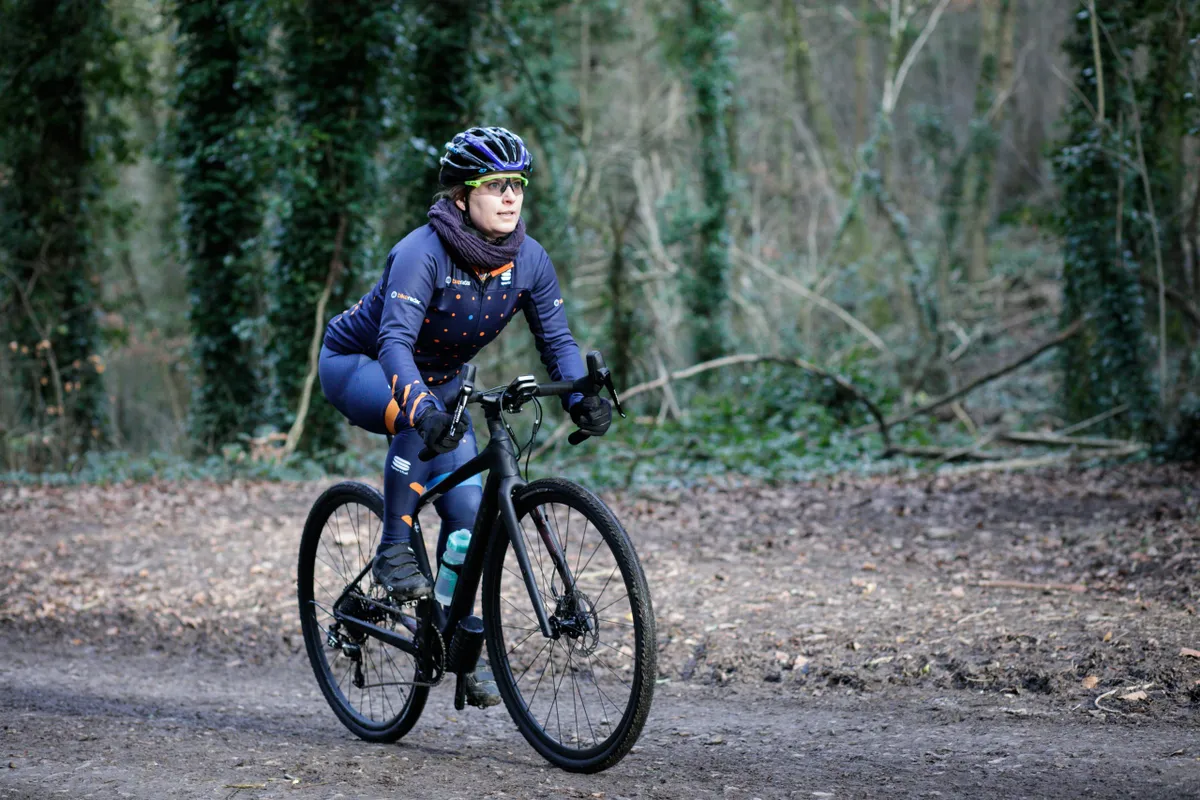
“The question should be, ‘are you using the wrong crank length?'” Burt says, following up with a neat analogy: “If I have a big box and a small box, and I ask you to jump on one of them 100 times, which one would be easier? The small box. That’s crank length.”
How does crank length affect power output?
But wait, surely it can’t be that simple – won’t a longer crank help a rider produce more power because it’s a longer lever?
Actually, no. Archimedes was correct that levers amplify an input force, and that longer levers increase that effect, but the world is not a bicycle.
“The science is clear,” says Burt, “crank length is not important in sub-maximal power production, within a range of 80mm to 300mm."
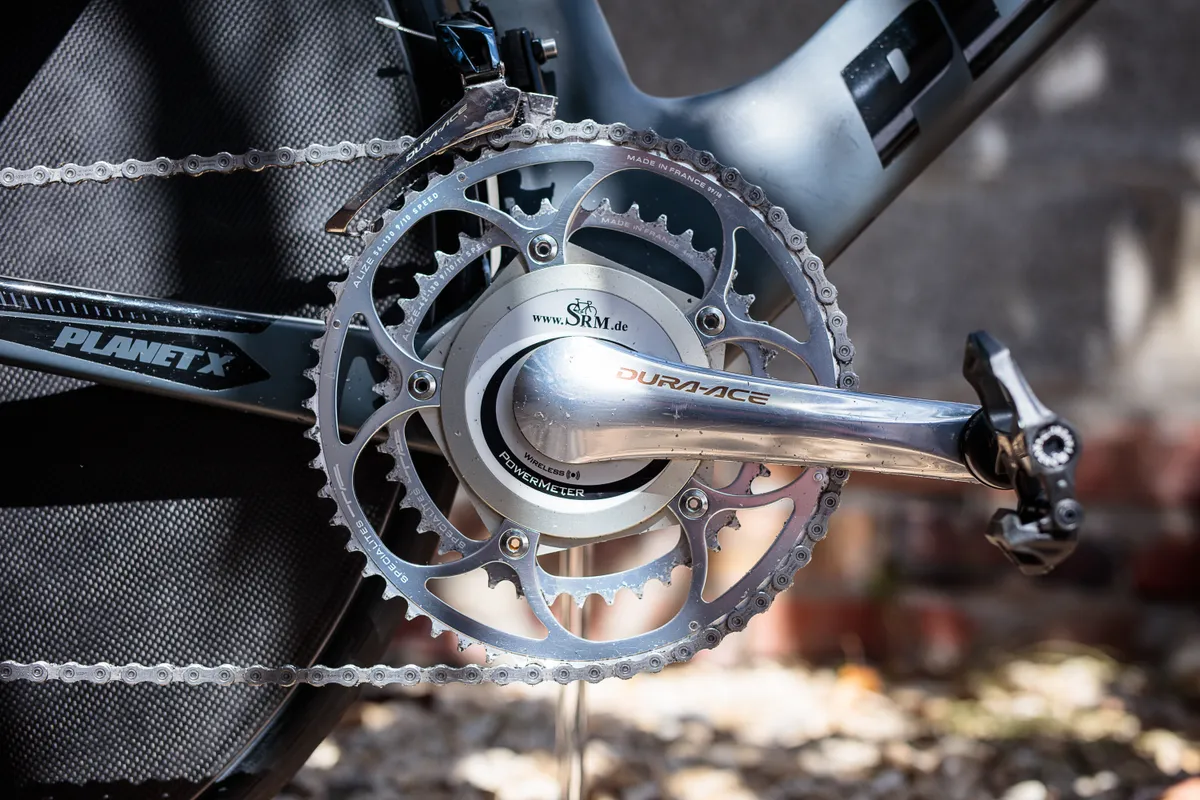
The key detail is that the power you can produce on a bicycle isn’t solely dependent on torque (the amount of force you can apply to the crank lever in isolation). Your power output is determined by torque multiplied by cadence.
While longer cranks do produce more torque, they also decrease cadence for a given effort because the turning circle is larger.
Likewise shorter cranks produce less torque, but cadence increases for the same effort because the turning circle is shorter. The net effect on power output of crank length (within the 80mm to 300mm range) should be negligible.
The only real exception to this rule is “sprinting from a standing start on a fixed gear bicycle”, Burt says, because the increased leverage of a longer crank can make it easier to get a massive gear off the line.

Everywhere else, though, it doesn’t really matter. “When you change your crank length, you’re effectively just changing your gearing. A longer crank essentially just gives you a slightly easier gear, and vice versa”, says Burt.
“If your bike has multiple gears, though, you can just change gear to compensate for that change and pick the crank length you want for other reasons.”
Are there any benefits to using longer cranks?
What we define as a ‘long’ crank will depend on how tall you are and how long your legs are, but the benefits of using longer cranks appear hard to pin down.
Shimano suggests that “mountain bike riders may choose a longer crank to help them generate more torque at lower cadences on steep or technical terrain”.
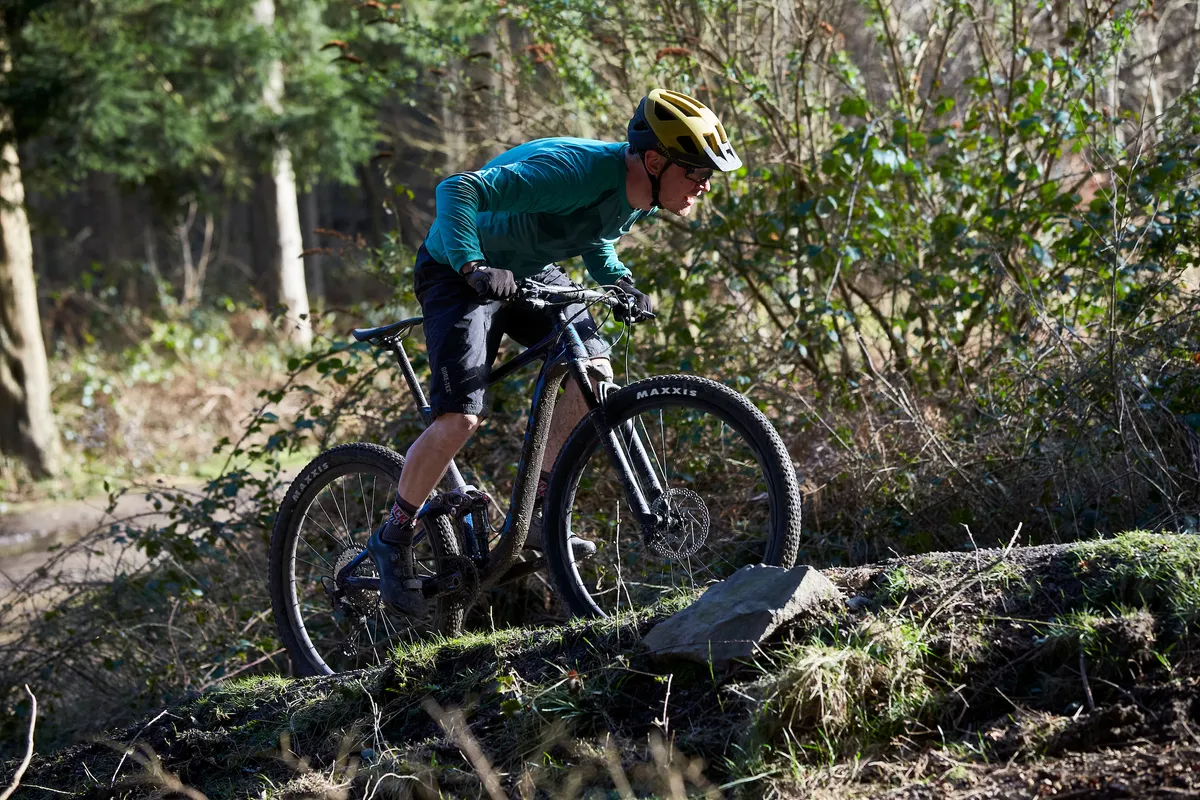
It’s worth noting that another solution to riding on steep or technical terrain would be to simply use an easier gear, especially now that wide range cassettes are readily available on both mountain bike groupsets and road bike groupsets.
It’s also clear that using cranks that are too long for you or your riding position can potentially introduce other issues surrounding high cadences, breathing, joint or muscular pain, knees hitting the chest or handlebars, as already discussed above.
So, unless you’re a track sprinter or BMX racer, there’s very little reason to move to a longer crank, it would seem.
Are there any benefits to using shorter cranks?
Conversely, switching to shorter cranks could potentially have some benefits.
“If you struggle with knee or back problems on the bike, shorter cranks might help”, says Burt. “Not because they directly fix the problem, but because shorter cranks put less load on your joints and hip flexors.”
From a mountain biking perspective, shorter cranks also increase ground clearance, meaning “fewer worries about clipping pedals constantly”, according to Rob Weaver, technical-editor-in-chief of BikeRadar and Mountain Biking UK magazine.

A study on the influence of crank length on performance of cross-country mountain bikers also suggested there may be performance advantages to shorter cranks (170mm) because they improved the time taken to reach peak power with “no impediment to either power output produced at low cadences or indices of endurance performance using the shorter crank length”.
Alternatively, if you race road or time trial events in an aggressive aero position, short cranks might also be a marginal gain.
“For aero or time trial positions, short cranks are 100 per cent the way to go”, Burt says. “If you’re riding in an aggressive position using long cranks, you’re going to be closing up your hip angle. This can constrict your breathing and negatively affect your power output.”
Burt also suggests there could be a small aerodynamic gain to using smaller cranks because “the smaller turning circle is punching a slightly smaller hole in the air”.
Indeed, for the Rio Olympics in 2016 the Team GB track team switched to 165mm cranks for the men and 160mm cranks for the women, in order to improve their efficiency in the highly aggressive aero positions that wind tunnel testing suggested they adopt.
Similarly, in the build-up to Bradley Wiggins’ hour record attempt, he switched from using 177.5mm to 170mm cranks. Burt says Wiggins (who is 190cm tall) was able to improve his aero position by around “3.5 per cent” as a result of the increased saddle to bar drop and reduced hip closure angle.
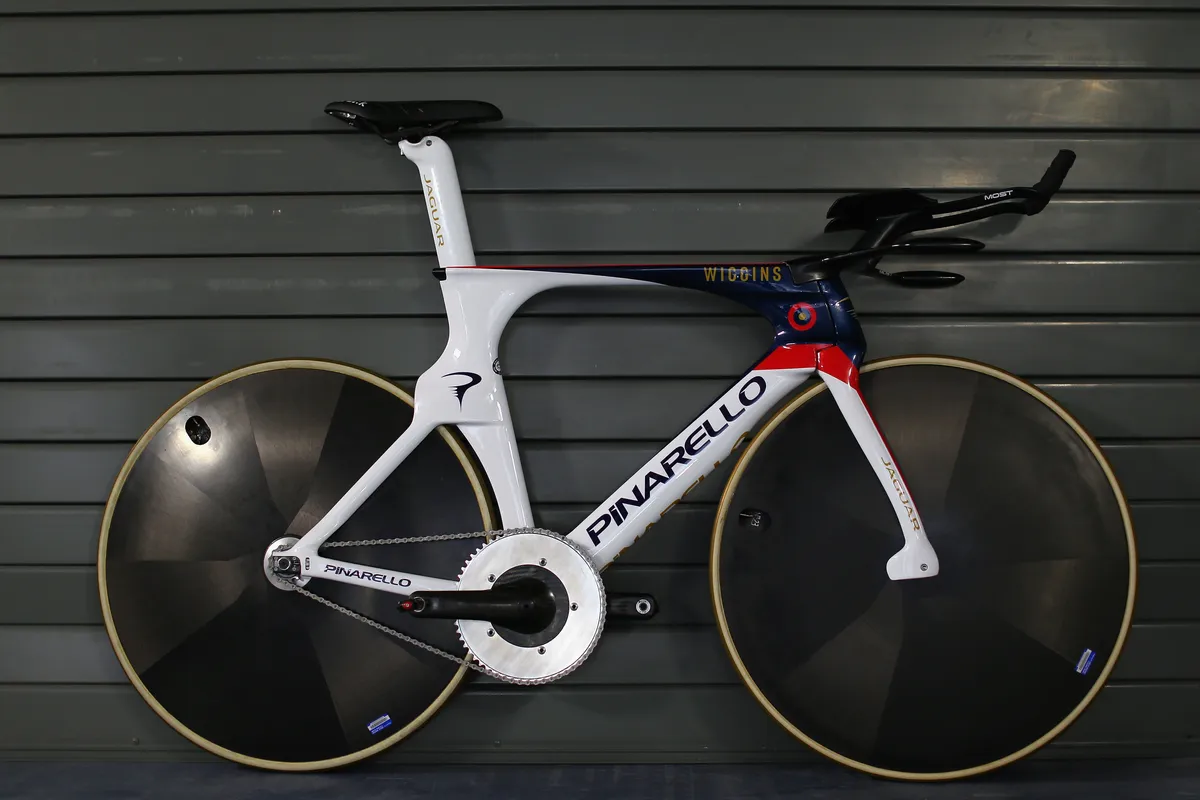
Another noteworthy example is Canyon's most recent update to its Speedmax triathlon bike, where stock crank lengths have been reduced across the sizing range by 2.5mm, on average.
This follows a growing trend on dedicated triathlon bikes (which are designed purely around riding in the aero position) where seat tube angles and crank lengths have got progressively steeper and shorter respectively, compared to road bikes or UCI legal time trial bikes.
Seat tube angles over 78 degrees are common, for example, with Canyon’s latest Speedmax range offering a seat tube angle of over 80 degrees across all sizes. Contrast this to road bike geometry, where the typical range for seat tube angles is in the low to mid 70s.
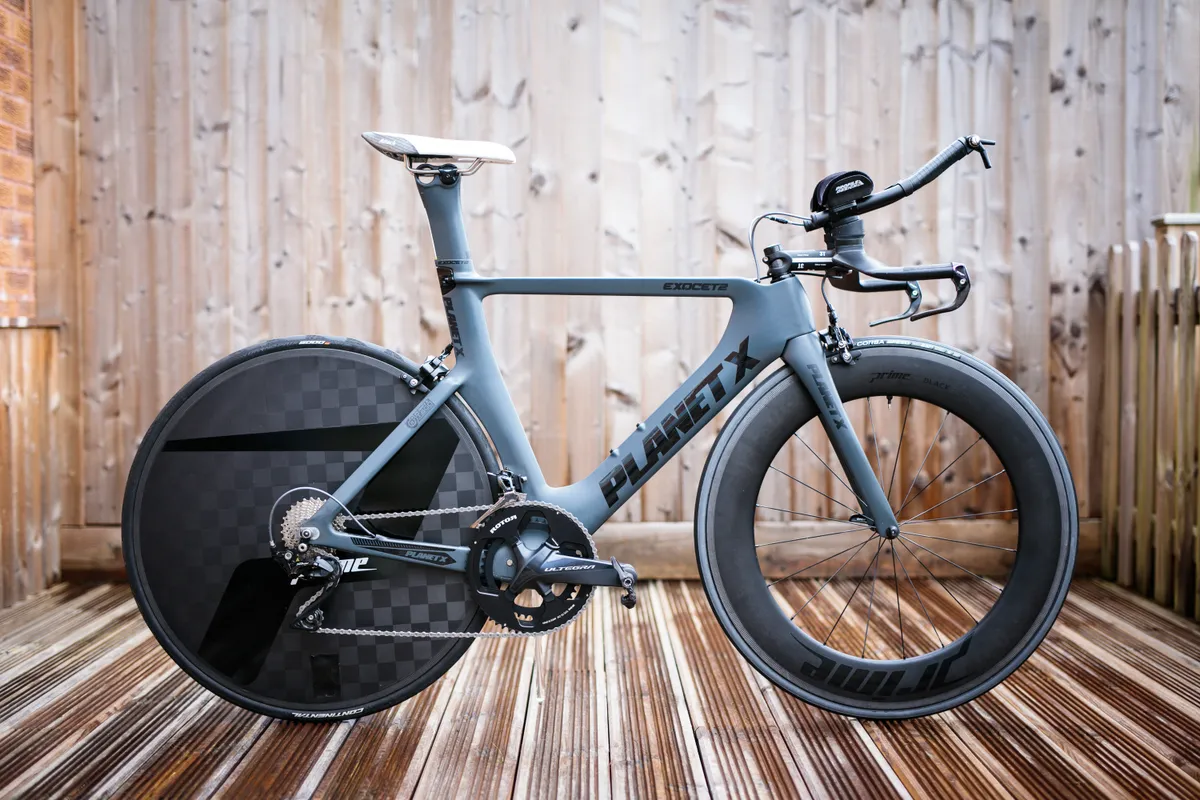
As with the other examples cited, the idea is to move the rider forward and up over the bottom bracket. This helps reduce hip closure and improve the recruitment of the gluteal muscles, and there are even studies that show it might help improve pedalling efficiency, rider aerodynamics and the transition between running and cycling (if you’re into that sort of thing).
Burt has another helpful analogy: “If you’re trying to stamp on something, would you generate more power if you were standing directly above the object, or if you were behind it and trying to reach it at a distance? It’s the former, and that’s why we see track sprinters and the like trying to get their saddles as high and as far forward as possible, within UCI rules.”

My experience with crank length
Anecdotally, in the past I noticed a 10- to 15-watt difference in my Functional Threshold Power when switching between my road and time trial bike, both of which had 172.5mm cranks.
As a result of research for this article, and wondering if it was due to the increased closure of my hip angle when riding my time trial bike, I’ve switched to 165mm cranks on my time trial bike (I’m 183cm tall).
I can’t say for certain if it will enable me to claw back all of that missing horsepower, but my hip angle has opened up significantly in the aero position and it’s definitely more comfortable.
I’ve decided to stick with 172.5mm cranks on my road bike because I have to review bikes as stock as part of my job, and size large bikes almost always come with 172.5mm cranks.
Personally, I haven’t experienced any issues switching back and forth between 165mm cranks on the time trial bike and 172.5mm cranks on road bikes.
I’m perhaps not the best example though, given I once accidentally rode for a few months in blissful ignorance with mis-matched cranks on my road bike.
Whatever route you take, Burt’s advice for avoiding issues is to “use the same length cranks for all of your bikes, but go 5mm shorter on a time trial bike”.
The latter specifically is to reduce the increased hip closure that often occurs in an aggressive aero position.
What crank length should you be using on your bike?
To summarise, there’s no ‘right’ crank length for every cyclist and or cycling application, but cyclists of all types and disciplines should be wary of picking cranks that are too long.
“From my point of view,” Burt says, “the only downsides to switching to shorter cranks are the potential cost [if you’ve invested in a crank-based power meter then replacing it may not be cheap] and the small knock on effect it has on your bike fit, but the latter isn’t difficult to remedy – you just need to adapt your saddle height and fore/aft setting up and forward a bit.”
Burt’s ultimate view on the subject is: “If you haven’t got a problem, you don’t need to change your crank length. If you do, try something 5mm shorter.”
Phil Burt is a consultant bike fitter and physiotherapist. Having spent 12 years as the Head of Physiotherapy at British Cycling, as well as five years as Consultant Physiotherapist at Team Sky (now Team INEOS Grenadiers), he now offers his services to cyclists of all levels. For more information, head to philburtinnovation.co.uk
